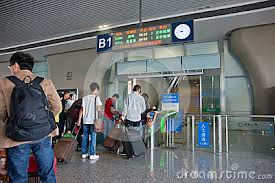A Practical Guide to Successful Pricing Strategies
Jump to navigation
Jump to search
<slideshow style="nobleprog" headingmark="⌘" incmark="…" scaled="true" font="Trebuchet MS" >
- title
- A Practical Guide to Successful Pricing Strategies
- author
- Phillip Mayer BSc (Econ) FIC MIoEE NLPdip (NobleProg Ltd)
</slideshow>
Domestics ⌘
Introductions ⌘
- Who are you?
- What do you do?
- What would you like to get from today?
- What is your market situation?
- What are you trying to achieve?
- Which is your preferred strategy and why?
Pricing of goods / services ⌘
- Exploring the variety of pricing strategies and identifying which is most relevant to you
- Managing pricing within product life cycle
- Developing tactics that support pricing objectives
- How to avoid price wars?
- Price and Profit: the dangers of discounting
- Price adapting and manipulating. Ways to make a price seem low
- Price flexibility: key factors and ways of calculation
- Choosing the right pricing strategy for your products and services on the local marke
International Pricing Strategies ⌘
- Understanding pricing in your specific markets from an international perspective
- Differences in pricing the consumer goods on the international market.
- Regional examples: Middle East, Eastern and Central Europe, Asia, North America.
- Actual pricing situations in your markets. Pricing strategies relevant to you and your competitors.
- Choosing the right strategy for your products and services across international markets
Penetration Pricing ⌘
- Price set to ‘penetrate the market’
- ‘Low’ price to secure high volumes
- Typical in mass market products – chocolate bars, food stuffs, household goods, etc.
- Suitable for products with long anticipated life cycles
- May be useful if launching into a new market
Market Skimming ⌘
- High price, Low volumes
- Skim the profit from the market
- Suitable for products that have short life cycles or which will face competition at some point in the future (e.g. after a patent runs out)
- Examples include: Playstation, jewellery, digital technology, new DVDs, etc.
- Many are predicting a firesale in laptops as supply exceeds demand.
Value Pricing ⌘
- Price set in accordance with customer perceptions about the value of the product/service
- Examples include status products/exclusive products
- Companies may be able to set prices according to perceived value.
Loss Leader ⌘
- Goods/services deliberately sold below cost to encourage sales elsewhere
- Typical in supermarkets, e.g. at Christmas, selling bottles of gin at £3 in the hope that people will be attracted to the store and buy other things
- Purchases of other items more than covers ‘loss’ on item sold
- e.g. ‘Free’ mobile phone when taking on contract package
Psychological Pricing ⌘
- Used to play on consumer perceptions
- Classic example - £9.99 instead of £10.99!
- Links with value pricing – high value goods priced according to what consumers THINK should be the price
Going Rate (Price Leadership) ⌘
- In case of price leader, rivals have difficulty in competing on price – too high and they lose market share, too low and the price leader would match price and force smaller rival out of market
- May follow pricing leads of rivals especially where those rivals have a clear dominance of market share
- Where competition is limited, ‘going rate’ pricing may be applicable – banks, petrol, supermarkets, electrical goods – find very similar prices in all outlets
Tender Pricing ⌘
- Many contracts awarded on a tender basis
- Firm (or firms) submit their price for carrying out the work
- Purchaser then chooses which represents best value
- Mostly done in secret
Price Discrimination ⌘
- Charging a different price for the same good/service in different markets
- Requires each market to be impenetrable
- Requires different price elasticity of demand in each market
- Prices for rail travel differ for the same journey at different times of the day
Destroyer/Predatory Pricing ⌘
- Deliberate price cutting or offer of ‘free gifts/products’ to force rivals (normally smaller and weaker) out of business or prevent new entrants
- Anti-competitive and illegal if it can be proved
Absorption/Full Cost Pricing ⌘
- Full Cost Pricing – attempting to set price to cover both fixed and variable costs
- Absorption Cost Pricing – Price set to ‘absorb’ some of the fixed costs of production
Marginal Cost Pricing ⌘
- Marginal cost – the cost of producing ONE extra or ONE fewer item of production
- MC pricing – allows flexibility
- Particularly relevant in transport where fixed costs may be relatively high
- Allows variable pricing structure – e.g. on a flight from London to New York – providing the cost of the extra passenger is covered, the price could be varied a good deal to attract customers and fill the aircraft
Marginal Cost Pricing - Example ⌘
- Aircraft flying from Bristol to Edinburgh – Total Cost (including normal profit) = £15,000 of which £13,000 is fixed cost*
- Number of seats = 160, average price = £93.75
- MC of each passenger = 2000/160 = £12.50
- If flight not full, better to offer passengers chance of flying at £12.50 and fill the seat than not fill it at all!
*All figures are estimates only
Contribution Pricing ⌘
- Contribution = Selling Price – Variable (direct costs)
- Prices set to ensure coverage of variable costs and a ‘contribution’ to the fixed costs
- Similar in principle to marginal cost pricing
- Break-even analysis might be useful in such circumstances
Target Pricing ⌘
- Setting price to ‘target’ a specified profit level
- Estimates of the cost and potential revenue at different prices, and thus the break-even have to be made, to determine the mark-up
- Mark-up = Profit/Cost x 100
Cost-Plus Pricing
- Calculation of the average cost (AC) plus a mark up
- AC = Total Cost/Output
Summary ⌘
- What did you get out of today?
- What is your market situation?
- What are you trying to achieve?
- Which is your preferred strategy and why?
- Next steps ...
Useful Links and Sources ⌘
- www.bized.co.uk
- Price Wars - Wikipedia
- Pricing Strategies - Wikipedia
- Product lifecycle management (PLM) - Wikipedia
- Revenue Management - Wikipedia
- Costing and Pricing - Cobweb











